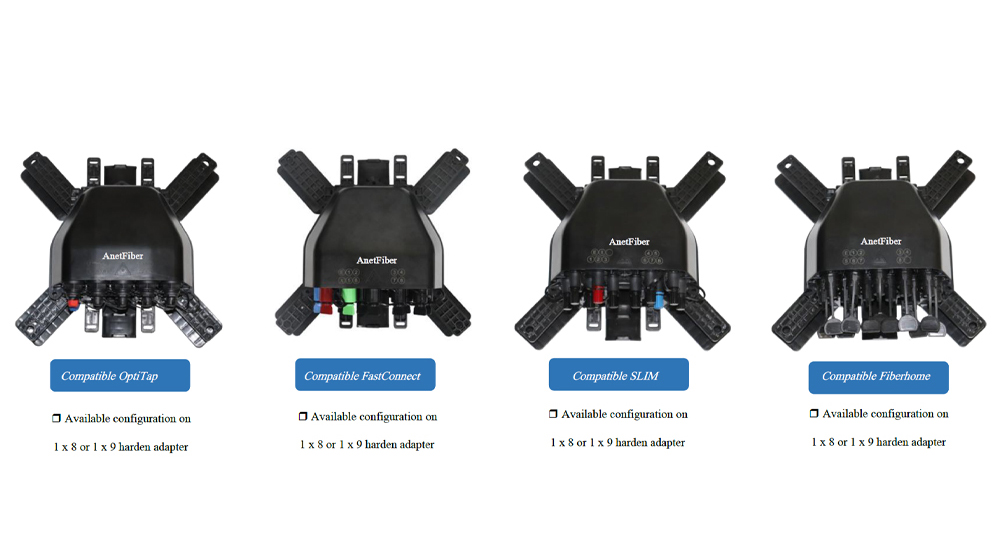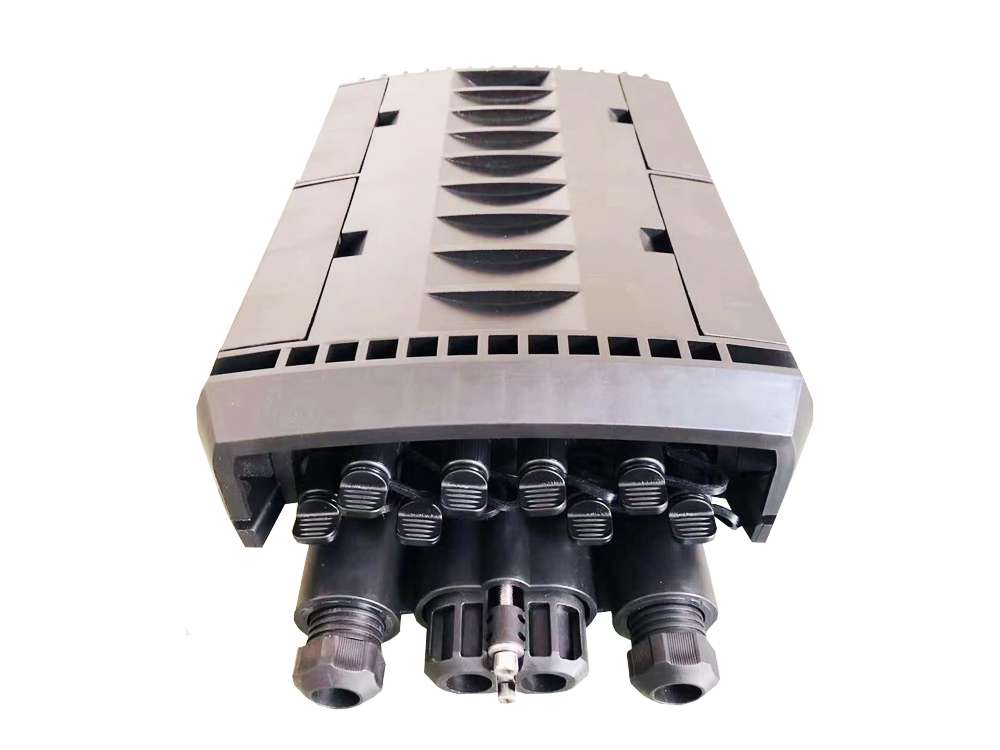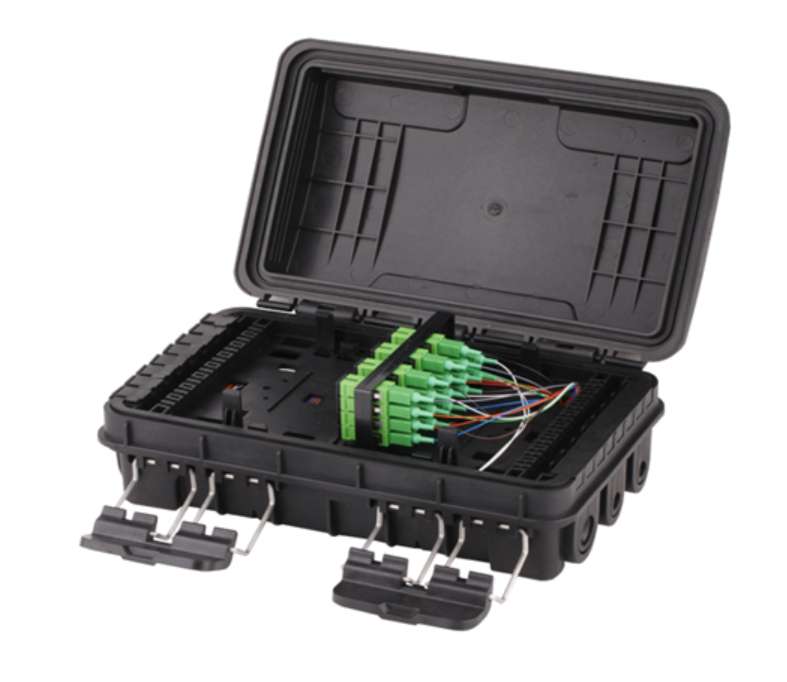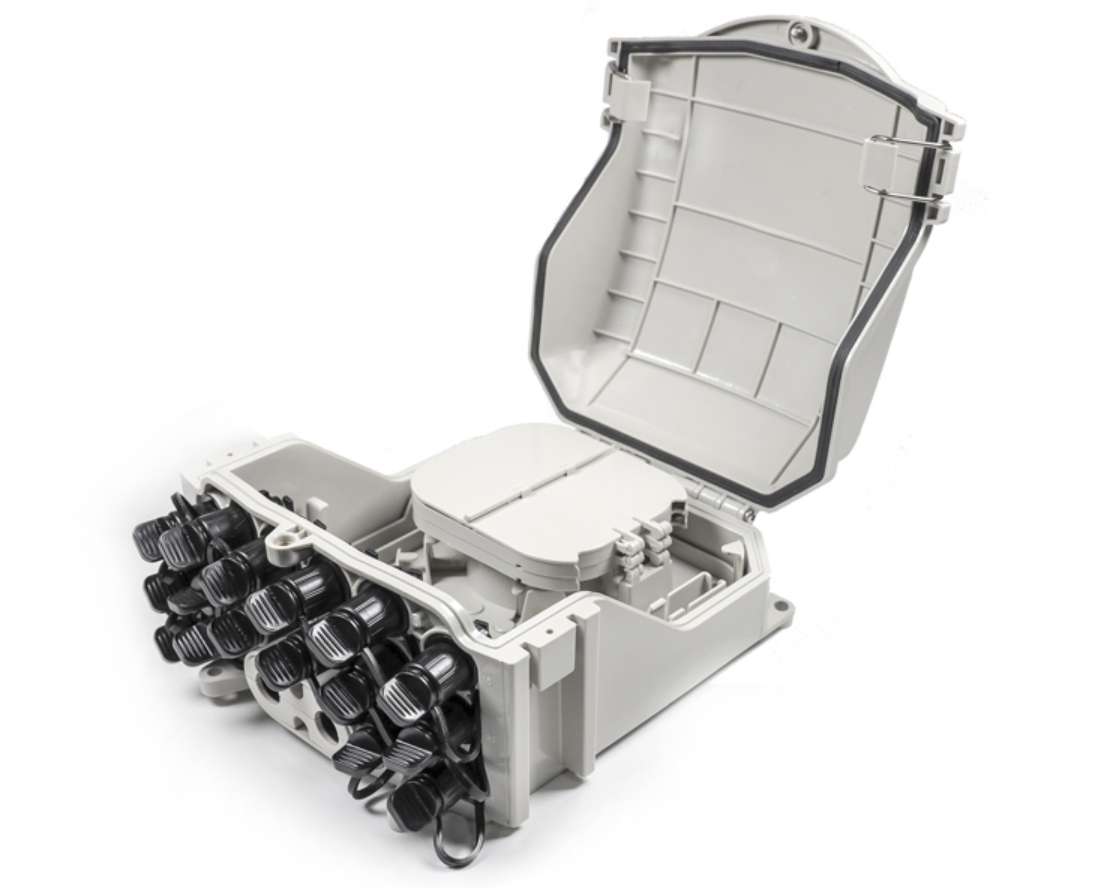The Role of CTO Distribution Terminal Boxes in Fiber Optic Networks

Enhancing Fiber Optic Networks
Fiber optic networks have revolutionized the way we transmit data, providing faster and more reliable connectivity. At the heart of these networks are CTO Distribution Terminal Boxes, which play a crucial role in ensuring efficient and seamless communication. These terminal boxes act as central hubs, connecting various fiber optic cables and enabling the distribution of signals to different locations. By effectively managing the flow of data, CTO Distribution Terminal Boxes optimize network performance and minimize signal loss. These fiber optic distribution boxes are specifically designed for use in telecommunication networks, providing a secure and organized solution for connecting multiple fibers. With their advanced features and robust construction, terminal boxes for fiber optic networks ensure uninterrupted transmission while maintaining signal integrity.
Exploring the Components and Features of CTO Distribution Terminal Boxes
CTO Distribution Terminal Boxes are composed of several key components that work together to ensure the smooth operation of fiber optic networks. Understanding these components and their functionalities is essential for network engineers and IT professionals.
Understanding the Components of CTO Distribution Terminal Boxes
Enclosure: The enclosure serves as the outer shell of the terminal box, providing protection for the internal components against environmental factors such as dust, moisture, and physical damage.
Splice Trays: Splice trays are designed to hold and organize fiber optic splices. They provide a secure platform for splicing fibers together, ensuring proper alignment and minimizing signal loss.
Adapters: Adapters, also known as couplers or connectors, facilitate the connection between fiber optic cables and devices within the terminal box. They ensure a reliable and efficient transfer of signals.
Splitters: Splitters are used to divide an incoming optical signal into multiple output signals, allowing for distribution to different locations or devices within the network.
Key Features of CTO Distribution Terminal Boxes
Modularity: CTO Distribution Terminal Boxes are designed with modular features that allow for easy expansion or reconfiguration as network requirements change over time. This flexibility ensures scalability and future-proofing of the network infrastructure.
Protection: These terminal boxes offer excellent protection against external elements, including dust, moisture, and temperature variations. This protection helps maintain optimal performance and extends the lifespan of the fiber optic cables.
Accessibility: CTO Distribution Terminal Boxes are equipped with user-friendly access points that enable convenient installation, maintenance, and troubleshooting processes. This accessibility reduces downtime and enhances overall network efficiency.
Cable Management: These terminal boxes incorporate cable management features such as slack storage units, routing guides, and labeling systems to ensure neat organization of fiber optic cables. Proper cable management minimizes signal interference and simplifies future maintenance tasks.
The components and features of CTO Distribution Terminal Boxes contribute to their effectiveness in enhancing performance and reliability in fiber optic networks.

Step-by-Step Guide to Installing and Maintaining CTO Distribution Terminal Boxes
Proper installation and regular maintenance are crucial for the optimal performance and longevity of CTO Distribution Terminal Boxes in fiber optic networks. Follow this step-by-step guide to ensure a successful installation and effective maintenance.
Installation Process of CTO Distribution Terminal Boxes
Plan and Prepare: Begin by assessing the network requirements and determining the appropriate location for installing the terminal box. Consider factors such as accessibility, cable routing, and environmental conditions.
Mounting: Securely mount the terminal box on a wall or rack using appropriate mounting brackets or hardware. Ensure that it is positioned at a convenient height for easy access during installation and future maintenance.
Cable Management: Organize the incoming and outgoing fiber optic cables within the terminal box using cable management accessories such as routing guides, tie wraps, or slack storage units. This helps maintain proper cable organization and reduces signal interference.
Splicing: Carefully splice the fibers together using fusion splicing or mechanical splicing techniques, ensuring proper alignment and minimizing signal loss. Follow industry best practices for splicing procedures.
Testing: After completing the installation, perform thorough testing to verify signal integrity and connectivity. Use appropriate testing equipment to measure optical power levels, insertion loss, and return loss.
Maintenance and Care of CTO Distribution Terminal Boxes
Regular Inspection: Conduct routine visual inspections of the terminal box to check for any signs of damage, loose connections, or environmental factors that may affect performance. Inspect adapters, connectors, cables, and enclosure integrity.
Cleaning: Clean the terminal box periodically using approved cleaning solutions or wipes specifically designed for fiber optics. Remove dust particles or debris that may accumulate on connectors or inside the enclosure.
Troubleshooting: In case of connectivity issues or performance degradation, follow troubleshooting procedures recommended by the manufacturer or seek assistance from qualified professionals who specialize in fiber optic networks.
Documentation: Maintain accurate documentation of all installations, modifications, repairs, and maintenance activities performed on CTO Distribution Terminal Boxes. This documentation serves as a valuable reference for future troubleshooting or upgrades.
By following these installation steps and implementing regular maintenance practices, you can ensure optimal performance and reliability of your CTO Distribution Terminal Boxes in fiber optic networks.
Considerations for Choosing the Perfect CTO Distribution Terminal Box
Selecting the right CTO Distribution Terminal Box is essential to ensure seamless connectivity and efficient performance in fiber optic networks. Consider the following factors when choosing the perfect terminal box for your network infrastructure.
Factors to Consider When Selecting a CTO Distribution Terminal Box
Size and Capacity Requirements: Evaluate the number of fiber optic cables and connections needed in your network. Choose a terminal box that can accommodate the required capacity without compromising on future scalability.
Compatibility with Existing Network Infrastructure: Ensure that the selected terminal box is compatible with your existing network components, such as fiber optic cables, connectors, adapters, and splitters. Compatibility ensures seamless integration and optimal performance.
Environmental Considerations: Assess the environmental conditions where the terminal box will be installed. Consider factors such as temperature variations, humidity levels, dust exposure, and physical protection requirements. Choose a terminal box that can withstand these conditions.
Ease of Installation and Maintenance: Look for a terminal box that offers user-friendly installation procedures and easy maintenance access points. This simplifies installation processes and reduces downtime during maintenance or troubleshooting tasks.
Different Types and Variations of CTO Distribution Terminal Boxes
Wall-Mounted Terminal Boxes: These compact terminal boxes are designed to be mounted on walls or other vertical surfaces. They are suitable for small-scale installations or locations with limited space.
Rack-Mounted Terminal Boxes: Rack-mounted terminal boxes are designed to be installed in standard equipment racks or cabinets. They provide higher capacity options and better cable management capabilities.
Outdoor Terminal Boxes: Outdoor terminal boxes are specifically designed to withstand harsh weather conditions and provide protection against moisture, UV radiation, extreme temperatures, and physical damage.
Modular Terminal Boxes: Modular terminal boxes offer flexibility in terms of expansion or reconfiguration as network requirements change over time. They allow for easy addition or removal of modules based on evolving needs.
Consider these types and variations based on your specific network requirements to choose the most suitable CTO Distribution Terminal Box for your fiber optic network infrastructure.

Overcoming Challenges and Troubleshooting CTO Distribution Terminal Boxes
Despite their importance in fiber optic networks, CTO Distribution Terminal Boxes can sometimes face challenges that affect their performance. Understanding these common challenges and having troubleshooting tips can help overcome issues effectively.
Common Challenges Faced with CTO Distribution Terminal Boxes
Issues related to connectivity and signal loss: Poor connectivity or signal loss can occur due to loose connections, damaged cables, or faulty adapters. Regular inspections and proper cable management can help identify and resolve these issues.
Environmental factors affecting performance: Environmental conditions such as temperature variations, humidity, dust, or exposure to sunlight can impact the performance of terminal boxes. Choosing appropriate outdoor-rated or environmentally sealed terminal boxes can mitigate these effects.
Troubleshooting Tips for CTO Distribution Terminal Boxes
Steps to diagnose and resolve common problems:
Check for loose connections: Ensure all fiber optic cables are securely connected to the adapters within the terminal box.
Inspect for physical damage: Examine cables, connectors, and adapters for any signs of damage or wear.
Verify cable routing: Ensure that cables are properly routed within the terminal box without excessive bending or tension.
Test optical power levels: Use an optical power meter to measure power levels at different points in the network to identify any discrepancies.
When to seek professional assistance:
If troubleshooting steps do not resolve the issue or if there is a need for specialized equipment or expertise.
In case of complex network configurations or larger-scale installations where professional assistance may be necessary.
By being aware of these common challenges and following troubleshooting tips, you can address issues promptly and maintain optimal performance in your fiber optic network using CTO Distribution Terminal Boxes.
The Future of CTO Distribution Terminal Boxes in Fiber Optic Networks
As technology continues to advance, the future of CTO Distribution Terminal Boxes holds exciting possibilities for enhancing fiber optic networks.
Emerging Trends in CTO Distribution Terminal Boxes
Advancements in technology and design: Manufacturers are constantly innovating to improve the performance and functionality of CTO Distribution Terminal Boxes. This includes advancements in materials, connectors, adapters, and enclosure designs, resulting in more efficient and reliable terminal boxes.
Implications for future network infrastructure: The evolution of CTO Distribution Terminal Boxes will have a significant impact on network infrastructure. These advancements will enable higher data transmission rates, increased capacity, and improved signal quality, allowing for the seamless integration of emerging technologies such as 5G networks and Internet of Things (IoT) devices.
Anticipated Benefits and Innovations
Enhanced performance and efficiency: Future CTO Distribution Terminal Boxes are expected to offer even better performance metrics, including lower insertion loss, higher return loss, and improved signal integrity. This will result in faster data transfer speeds and reduced latency.
Integration with other emerging technologies: As fiber optic networks become more integrated with other technologies, such as cloud computing and edge computing, CTO Distribution Terminal Boxes will play a crucial role in facilitating these connections. They will provide seamless integration between fiber optic cables and networking equipment.
These anticipated benefits and innovations highlight the importance of staying updated with the latest trends in CTO Distribution Terminal Boxes. By embracing these advancements, network engineers can enhance their fiber optic networks' capabilities while ensuring optimal performance.

Harnessing the Power of CTO Distribution Terminal Boxes
CTO Distribution Terminal Boxes are vital components in the world of fiber optic networks, enabling efficient and reliable connectivity. With their advanced features, modular designs, and compatibility with existing network infrastructure, these terminal boxes play a crucial role in optimizing network performance. By properly installing and maintaining CTO Distribution Terminal Boxes, network engineers can ensure seamless communication, minimize signal loss, and overcome common challenges. As technology continues to evolve, the future holds even more exciting advancements for these terminal boxes, promising enhanced performance and integration with emerging technologies. Harnessing the power of CTO Distribution Terminal Boxes is key to building robust fiber optic networks that meet the demands of today's digital world.
See Also
Exploring the Applications of LC SC Duplex Fiber Optic Adapters
Discover the 8 Core Fiber Optic Terminal Box
Understanding Different Types of Fiber Optic Adapters: A Comprehensive Guide
Exploring IP68 Outdoor Fiber Optic Cables
Building Reliable Network Infrastructure with Fiber Patch Cords
About US
Follow Us
AnetFiber company's main products are indoor and outdoor optical fiber cables, outdoor waterproof pre-connected fiber-to-the-home products, PLC optical fiber splitters, optical fiber jumpers and pigtails, MTP®/MPO high-density big data product solutions, optical fiber field quick connectors and research and development molding, injection molding and production of optical fiber distribution boxes, optical fiber chassis cabinets, the market has expanded to the world, Europe, America, Asia, the Middle East and Latin America.
Address
Shenzhen City, Baoan District, Yanluo Street, Tangxiayong Community, Yangyong Industrial Road, Tonggangda New Energy Vehicle Park 406
Contacts
+86 199 2655 3586

